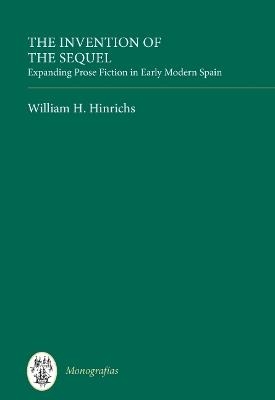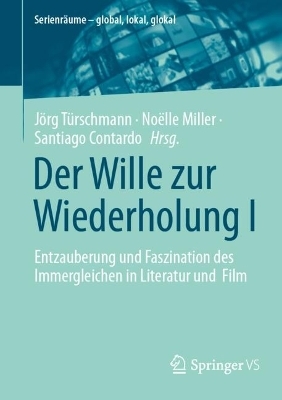
The Invention of the Sequel
Expanding Prose Fiction in Early Modern Spain
Seiten
2011
Tamesis Books (Verlag)
978-1-85566-232-2 (ISBN)
Tamesis Books (Verlag)
978-1-85566-232-2 (ISBN)
This book proposes a new way of tracing the history of the Early Modern Spanish novel through the prism of literary continuation. It identifies and examines the Golden Age narratives that invented the sequel and the narrative genres that the sequel in turn invented.
This book proposes a new way of tracing the history of the Early Modern Spanish novel through the prism of literary continuation. It identifies and examines the Golden Age narratives that invented the sequel and the narrative genres that the sequel in turn invented.
The author explores the rivalries between apocryphal and authorized sequelists that forged modern notions of authorship and authorial property. The book also defines the sequel's forms and functions, filling a major gap in literary theory in general and Peninsular literary studies in particular. Notably, the author demonstrates that the sequel develops first and foremost in Early Modern Spain, an unacknowledged and unexamined contribution to Western letters. With its panoramic scope, this study serves as an introduction to the central novelistic genres and texts of Early Modern Spain. From this foundational starting point, it alsooffers a general framework for understanding imaginative expansion in subsequent time periods and literary traditions.
William H. Hinrichs is a founding faculty member and Assistant Professor of Modern Languages at Bard High School Early College, Queens.
This book proposes a new way of tracing the history of the Early Modern Spanish novel through the prism of literary continuation. It identifies and examines the Golden Age narratives that invented the sequel and the narrative genres that the sequel in turn invented.
The author explores the rivalries between apocryphal and authorized sequelists that forged modern notions of authorship and authorial property. The book also defines the sequel's forms and functions, filling a major gap in literary theory in general and Peninsular literary studies in particular. Notably, the author demonstrates that the sequel develops first and foremost in Early Modern Spain, an unacknowledged and unexamined contribution to Western letters. With its panoramic scope, this study serves as an introduction to the central novelistic genres and texts of Early Modern Spain. From this foundational starting point, it alsooffers a general framework for understanding imaginative expansion in subsequent time periods and literary traditions.
William H. Hinrichs is a founding faculty member and Assistant Professor of Modern Languages at Bard High School Early College, Queens.
The Birth of the Sequel: The Celestina's Maculate Conception
From Knights Errant to Errant Women: The Sequels of Feliciano de Silva
A Cannon Shot from the Margins: The Segundo Lazarillo's Unexamined Role in the Story of the Sequel and the Picaresque
The Author Strikes Back: Alemán's Picaresque Revenge
From the Galatea to the Quijote: Cervantes' Quest for Closure
| Reihe/Serie | Monografías A |
|---|---|
| Verlagsort | Woodbridge |
| Sprache | englisch |
| Maße | 156 x 234 mm |
| Gewicht | 1 g |
| Themenwelt | Geisteswissenschaften ► Sprach- / Literaturwissenschaft ► Anglistik / Amerikanistik |
| Geisteswissenschaften ► Sprach- / Literaturwissenschaft ► Literaturwissenschaft | |
| ISBN-10 | 1-85566-232-9 / 1855662329 |
| ISBN-13 | 978-1-85566-232-2 / 9781855662322 |
| Zustand | Neuware |
| Haben Sie eine Frage zum Produkt? |
Mehr entdecken
aus dem Bereich
aus dem Bereich
Poetik eines sozialen Urteils
Buch | Hardcover (2023)
De Gruyter (Verlag)
59,95 €
Entzauberung und Faszination des Immergleichen in Literatur und Film
Buch | Softcover (2024)
Springer Fachmedien Wiesbaden GmbH (Verlag)
84,99 €
Buch | Softcover (2024)
belleville (Verlag)
20,00 €


